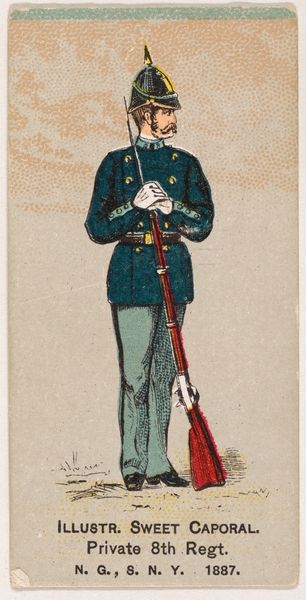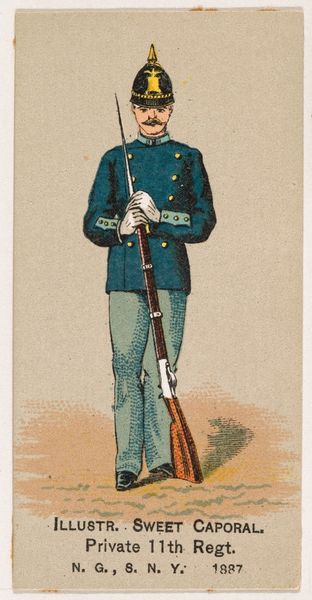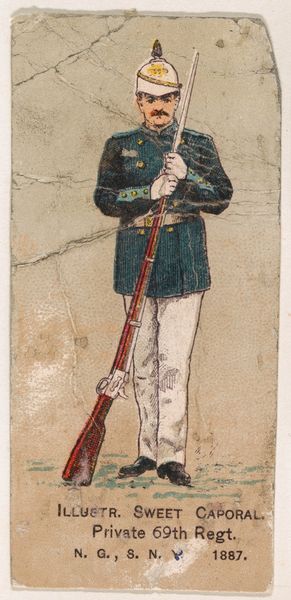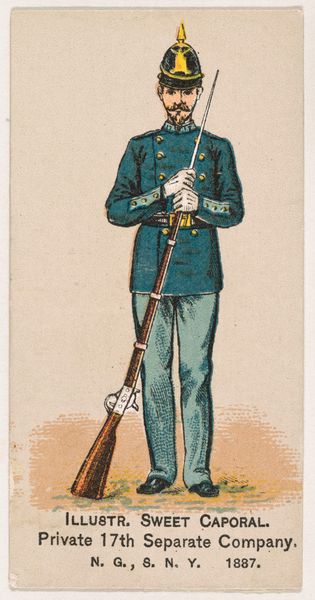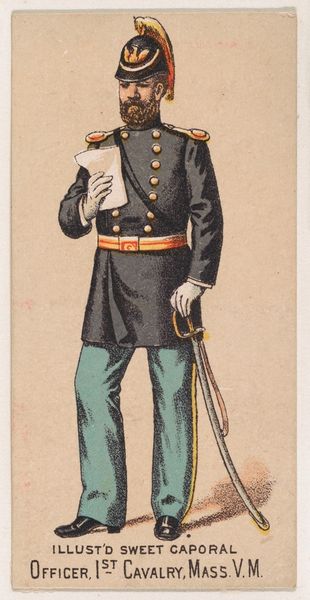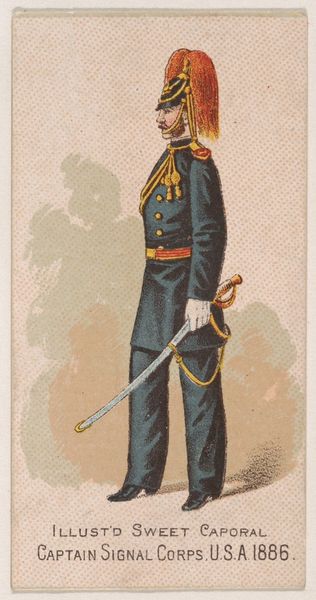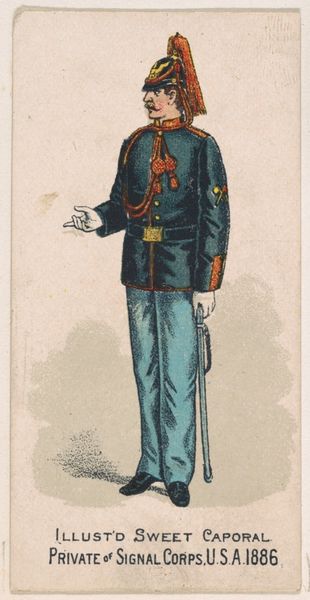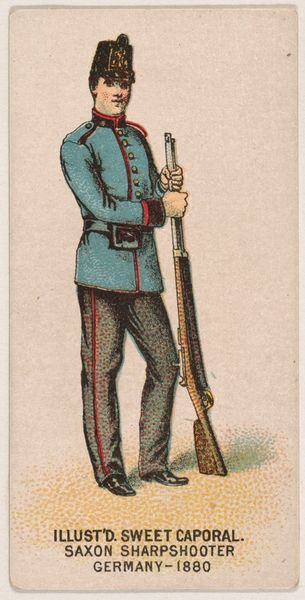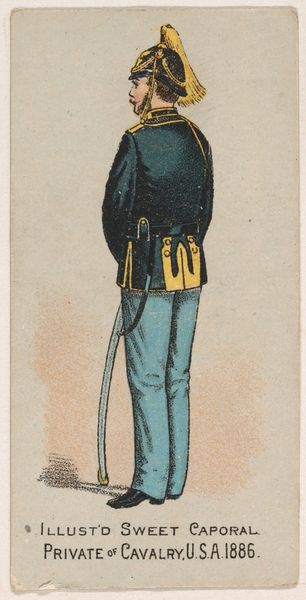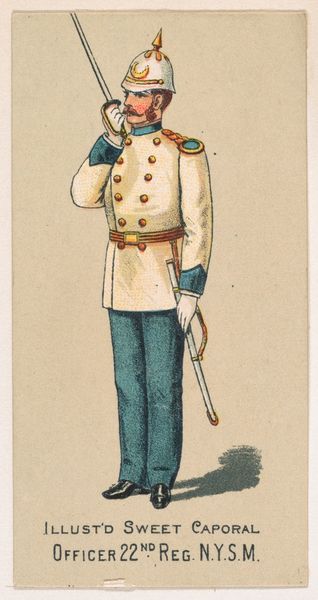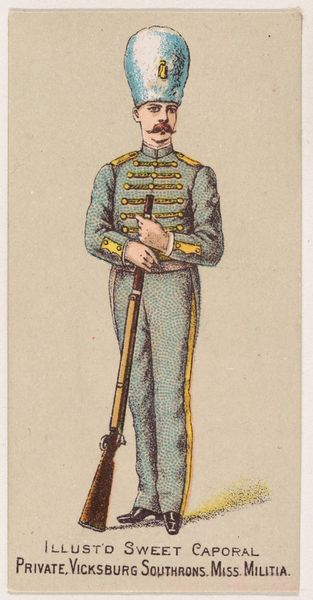
Private, 14th Regiment, National Guard of the State of New York, from the Military Series (N224) issued by Kinney Tobacco Company to promote Sweet Caporal Cigarettes 1888
0:00
0:00
drawing, print
#
portrait
#
drawing
# print
#
genre-painting
#
history-painting
#
academic-art
#
realism
Dimensions: Sheet: 2 3/4 × 1 1/2 in. (7 × 3.8 cm)
Copyright: Public Domain
Curator: Here we have "Private, 14th Regiment, National Guard of the State of New York," a print from the Military Series (N224) created around 1888 by the Kinney Tobacco Company. It was used as promotional material for Sweet Caporal Cigarettes. Editor: The print gives off a somewhat formal air. The man's stance and rigid posture create this mood. What really draws my eye is the flatness and slightly off-kilter colors, the sort of manufactured look indicative of its commercial function. Curator: Indeed. Let’s consider the figure's iconography. We have the detailed uniform and helmet, all carefully rendered to represent the regiment and suggest authority. The rifle, held at attention, almost becomes an extension of the body. The symbol on the helmet, while small, hints at something more specific regarding unit designation or civic identity, something beyond just soldier. Editor: You’re right about the commercial angle. We have to consider that these prints were essentially trade cards; cheaply made, designed to be collected and traded and then probably discarded. The actual cost of labor and materials compared to the artistic skill is rather unbalanced. The value was in the sheer volume produced and circulated to get people to buy more Sweet Caporal Cigarettes. Curator: But does the mass-produced context detract from the image itself? These were deliberately designed with visual appeal and social messaging, capturing the martial pride of the time. Notice how this figure represents ideas about civic duty and patriotism that were really important, that perhaps gave some buyer comfort to then engage in commerce. Editor: I'm less concerned with patriotism and more about how cheap printmaking processes intersect with these lofty ideas. It's a dance between image and industrial output. The social messaging, as you put it, served the material end: pushing product, fostering consumption. I wonder about the actual production, how many hands touched these cards, under what conditions. Curator: A fair point, although seeing through the promotional intention does not necessarily erase what the symbol suggests about national self-image and popular representation of soldiers at the time. Editor: Agreed. It highlights the way that images, even seemingly simple ones like this, become entangled with so much of the social fabric through consumer capitalism. A symbol pressed into service for industry! Curator: And conversely, industry leveraging established systems of meaning! Food for thought. Editor: Definitely food for thought... and quite a bit of chewing.
Comments
No comments
Be the first to comment and join the conversation on the ultimate creative platform.
